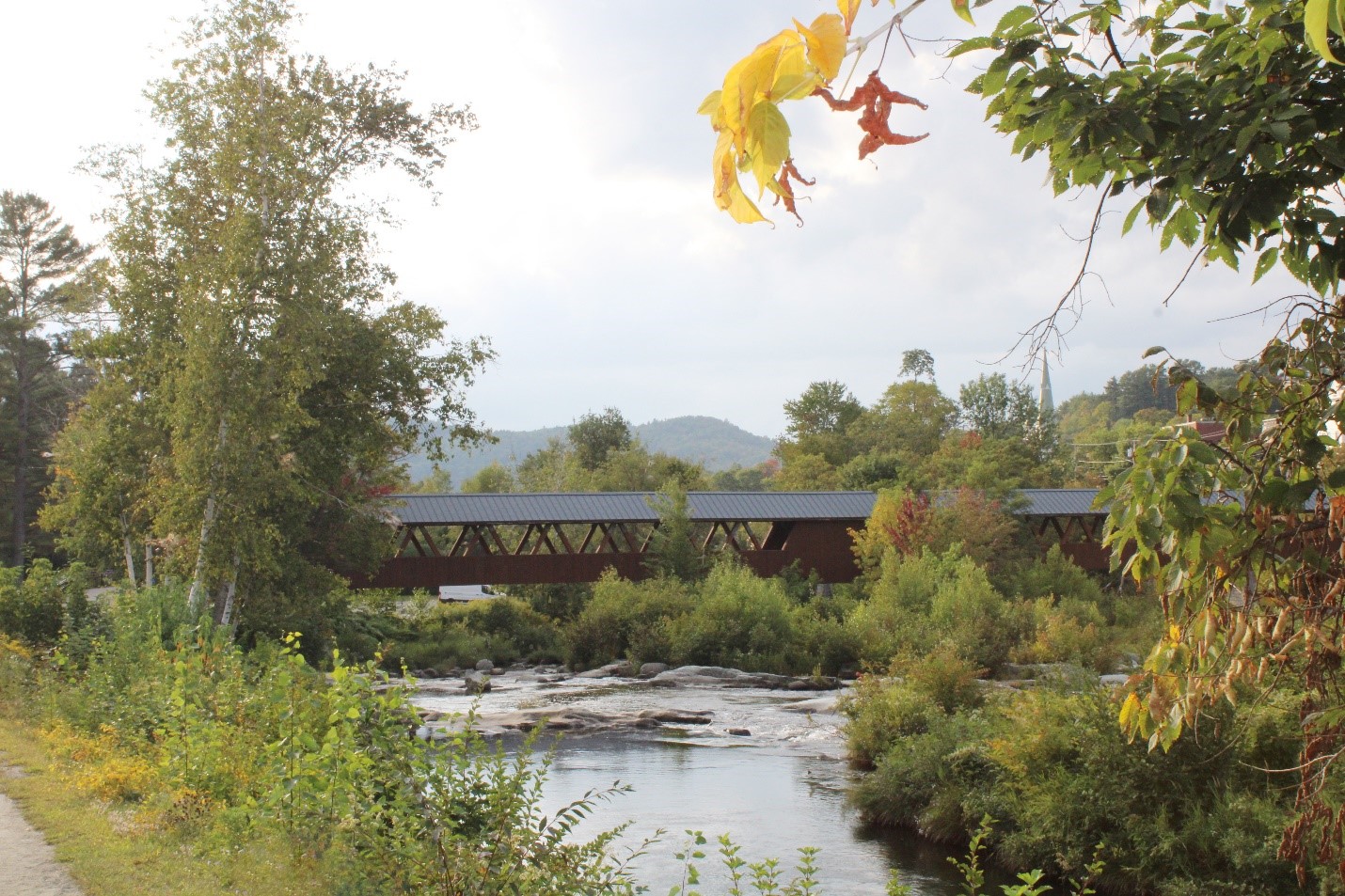
I’ve lived in northern New England my entire life.
Here in the Northeastern United States, we are known for many things, with some of the more noteworthy items including colorful fall foliage, mountains, skiing, taciturn locals and thriftiness that is refined to an art form. We are also fortunate to have many lakes, rivers and streams.
While these waterways are all lovely to look at and offer opportunities for a variety of recreational activities, they also tend to hinder expedient travel without some sort of clever detour. Thus, today’s blog has been inspired by the ingenuity of Littleton, NH’s residents – highlighted by the photo above, of a traditional covered bridge.
What does a covered bridge provide?
Essentially, it is a means of efficient, safe passage across treacherous terrain. The roof gives shelter from the hostile elements of snow and rain and, perhaps most importantly, the railings on either side keep the traveler from falling over the edge while negotiating the perilous crossing.
You may be pondering how my mental meandering about the benefits of bridges relates to the dreaded “cold call”. If so, then fair enough – I will set the stage.
As I draw closer to seeing my book in print, I can feel my anxiety increasing with each passing day. Not only has it been taxing to re-visit the trauma that was the inspiration behind writing my story, but I am frequently asked how I will “brand” my efforts, how I will “market” what I have produced, and what is my “end game” is. I don’t know the answer to any of those questions, nor do I feel any affinity towards branding or marketing. Compassion, vulnerability and authenticity are my only goals.
When initially researching resources for my book, I happened across Project Hope: EMS. I learned that Kent Meyer started this project to support other first responders who are working to manage the emotional trauma that occurs on the job. It is tough out on the frontlines of Emergency Medical Services and the emotional wounds run deep. This community is made up of people who understand the challenges of healing those wounds and are willing to support each other through the process.
On one particularly tough afternoon, I picked up my phone and dialed the number for Project Hope: EMS (https://projecthopeems.net/). Yes, indeed, I took a chance and made a cold call. And, Kent answered. I spent over an hour speaking with him about our stories, hopes, and aspirations for helping others to heal from workplace trauma.
Toward the end of our call, Kent asked me what I needed from him in order to move forward. It was then that I could succinctly put my struggle into words. I need a mentor – someone who understands what I am working to do. Support that is available and non-judgmental. Someone who understands the feeling of both good and bad days. Someone who has found and used a solid bridge to healing.
Cold calls and building bridges – important pieces of healing in community.